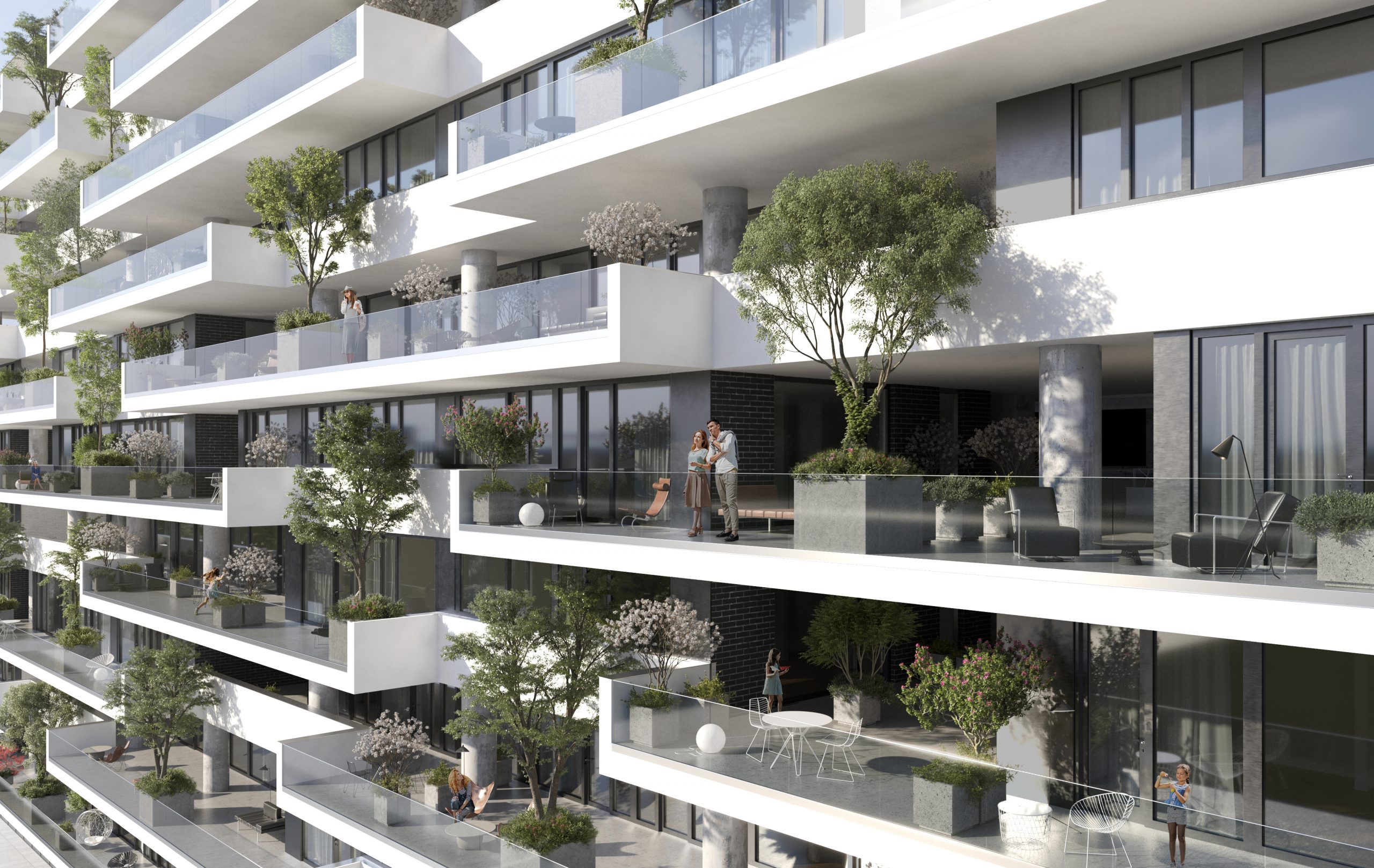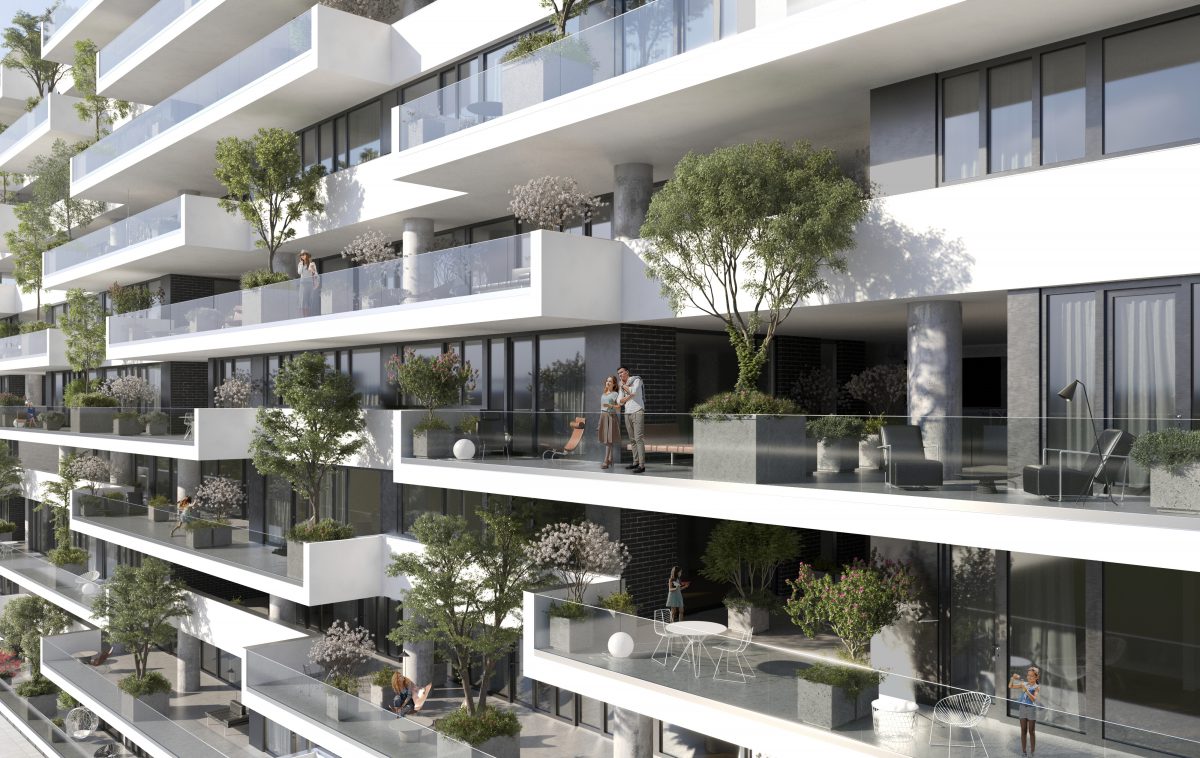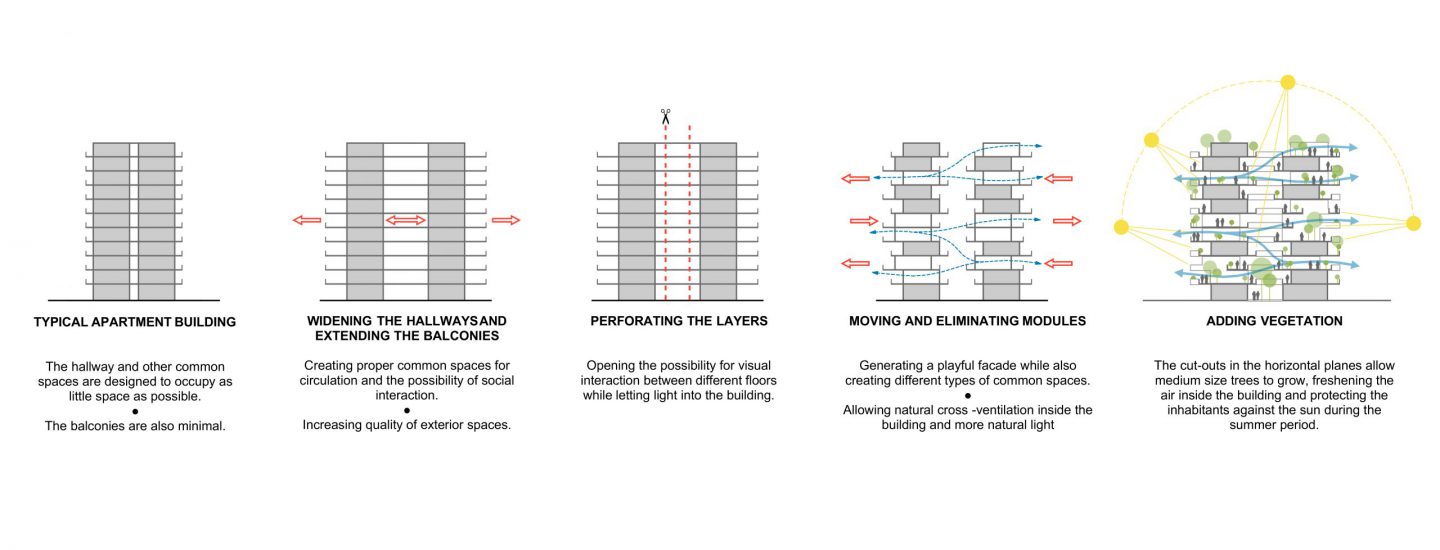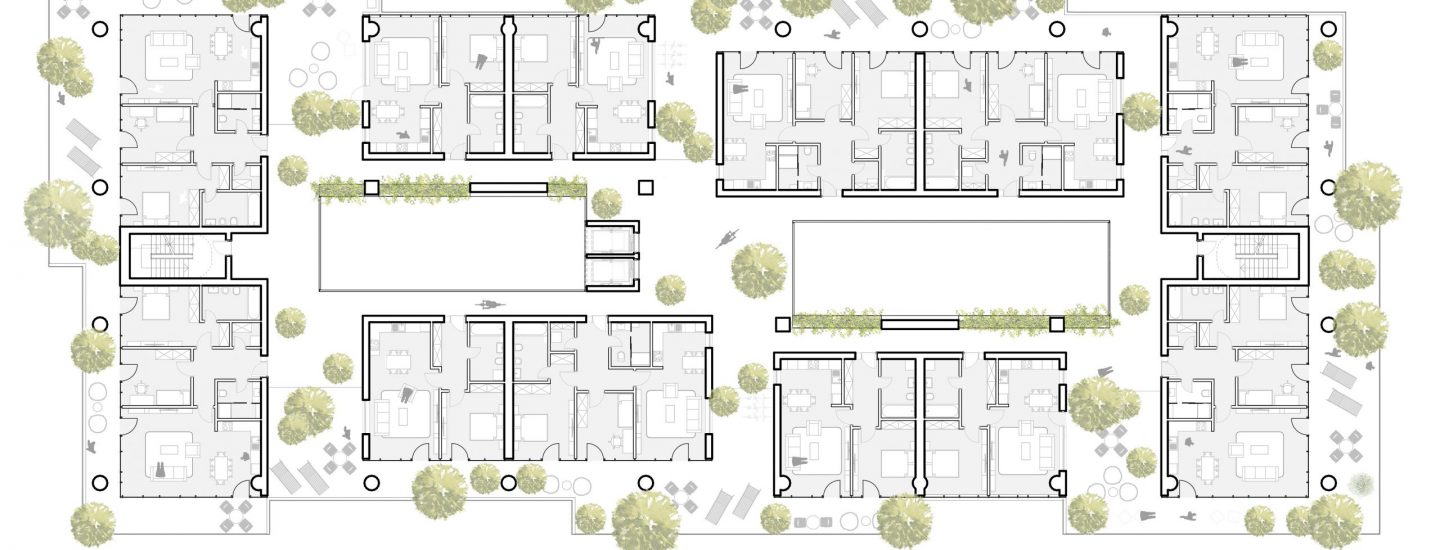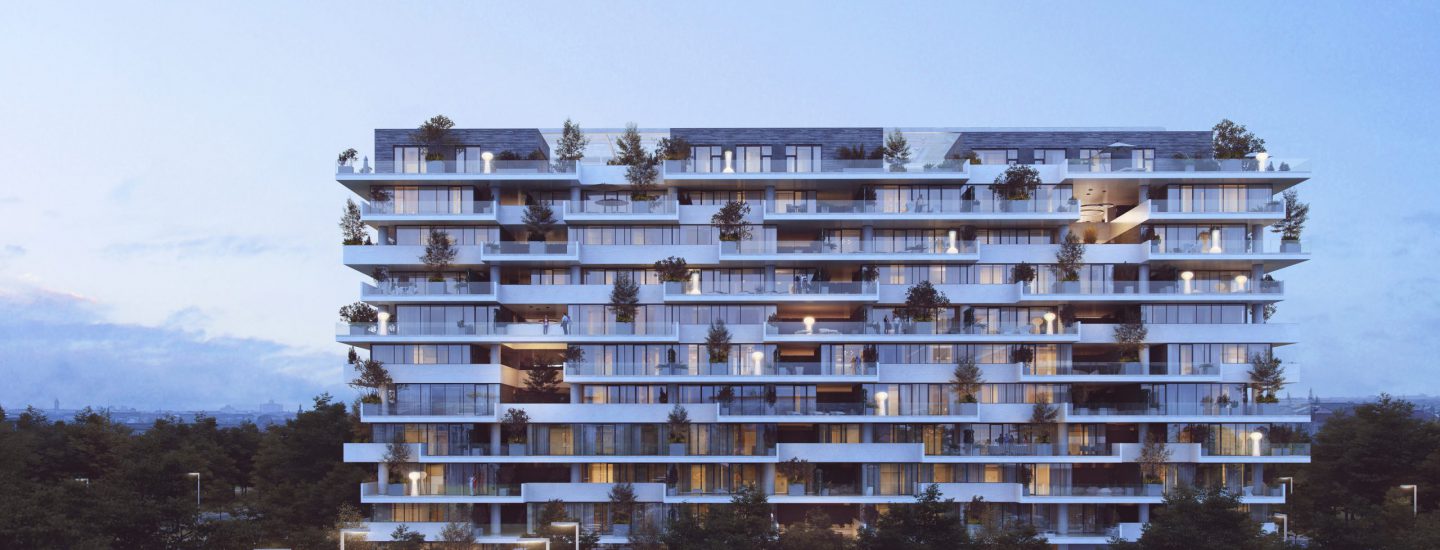Project Details
- Scheme & Version: International 2016 New Construction: Residential
- Stage: Interim
- Location: Timisoara, Romania
- Score & Rating : 80.8% Excellent
- Certificate Number: BREEAM-0078-8497
Project Team
- Client/ Developer: Vox Property Group
- Architect: Studio Arca
- Landscape Architect: Andrei Condoros
- Sustainability: ADP green building
- Assessor/ Auditor: ADP Consulting
- Interior Design: Ezzo Design
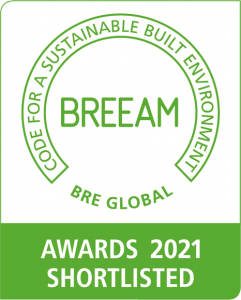
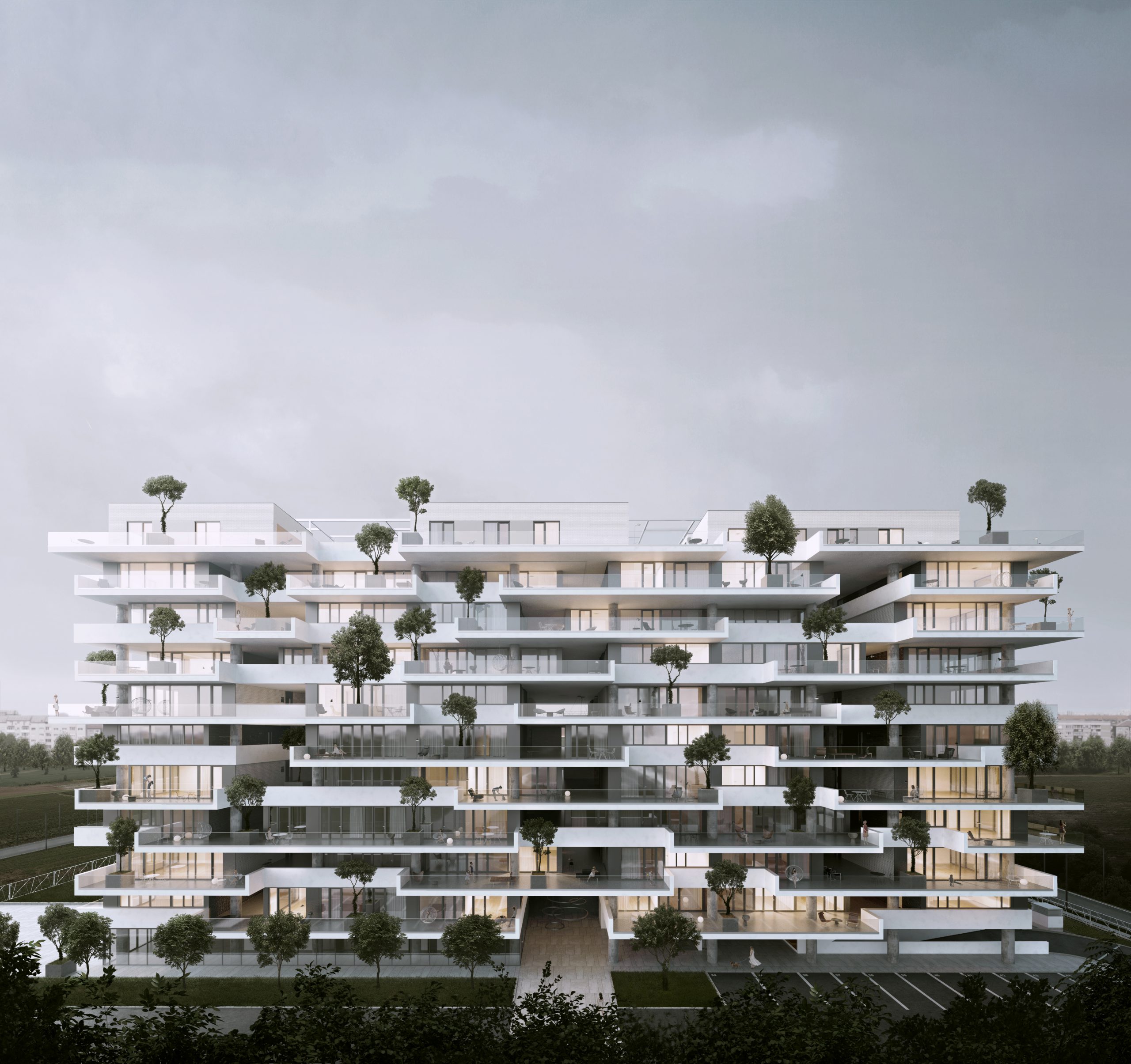
About the Building
Located in the northern part of Timisoara, this project is unique because of its architectural concept and features.
Vox Vertical Village is an alternative housing concept, significantly changing the approach of “collective housing”, generating a hybrid typology of apartment building; with generous spaces for social interaction and large outdoor private terraces, that almost double the indoor usable floor area, for each residence.
The terrace-oriented facades are fully glazed, so the indoor-outdoor border is cancelled, thus turning the terrace into an extension of the indoor space, an outdoor room, adequate for many family-time activities (relaxing, playing, working-out, socialising, gardening, sun-bathing etc.). The large awnings of the terraces above assure sun-shade in the summer and protection from rain and snow in the cold season.
Vox Vertical Village’s concept is based on strong sustainable principles. The BREEAM requirements are a very good framework for checking and improving the design and execution. The BREEAM certification confirms Vox Property Group’s high-quality standards and commitment to deliver a unique project in the residential market.
Green Strategy
This project differs from the usual collective housing building due to its large terraces that extend the interior space horizontally and vertically. This way, each apartment has generous exterior space, and access to plenty of daylight. The slabs work as a passive feature that protect the interior space from heavy rain, too much sunlight during the summer and from snow during the winter. Dynamic simulations were carefully analysed and measures were taken to make sure that, in the vicinity of the very large glazing, thermal comfort conditions will be satisfied.
The lush vegetation is a key feature of the design as more than 800 trees and shrubs will be placed both on the private terraces and in the common areas. This will improve biodiversity, improve the air quality, provide additional shade during the hot summer days and the natural elements much needed by the occupants for their comfort and pleasure.
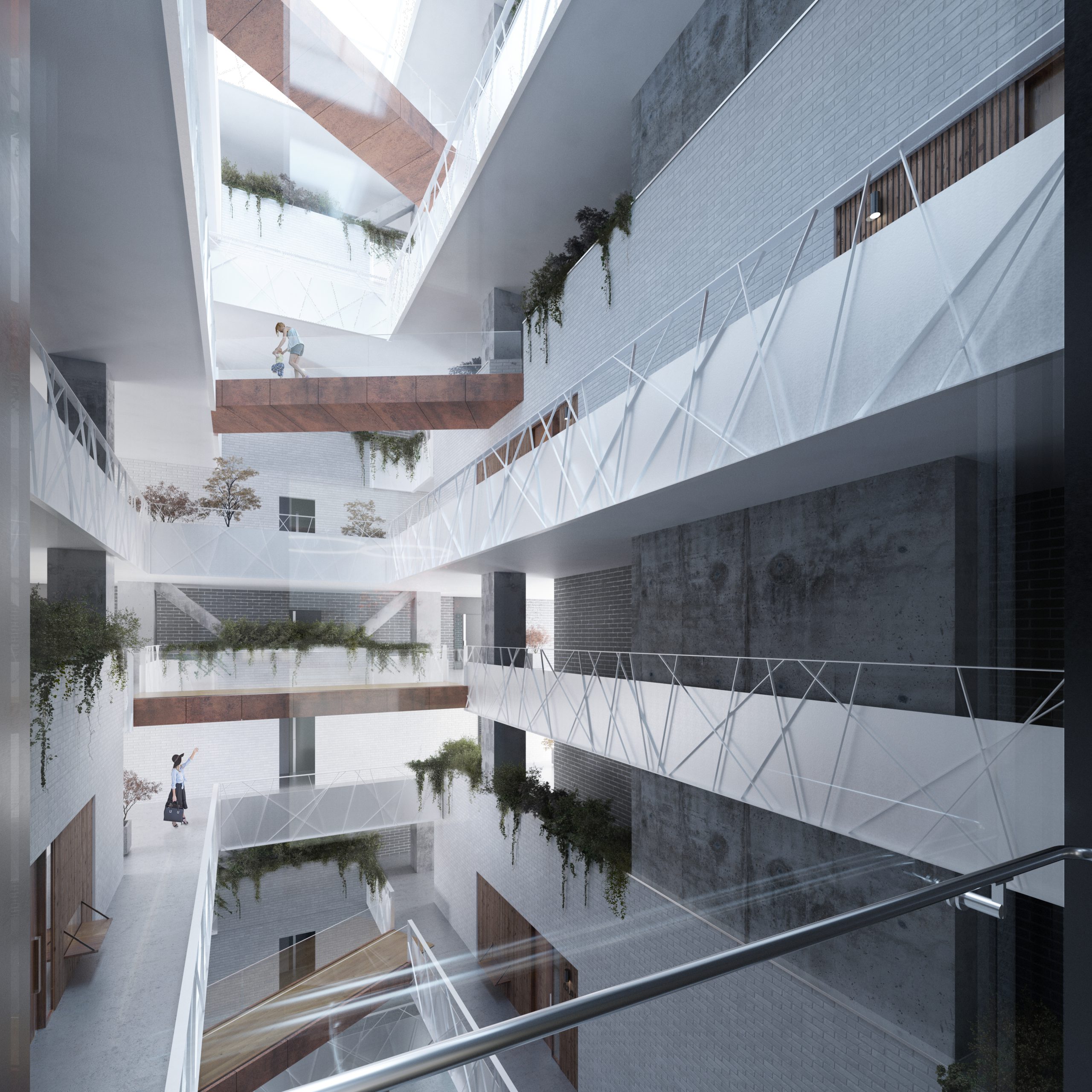

The framework of the building, a generous common space developed both horizontally and vertically, on all levels, is outlined by urban furniture, interior gardens and most importantly lots of natural light coming through the open spaces between residences. This building targets those with a dynamic lifestyle, by offering multiple facilities that successfully complete the imposing architecture and exceptional interior design.
– Radu Golumba, Architect, Studio Arca
Benefits of BREEAM Certification
One of the key-benefits of having BREEAM for our residential project is the sustainability of such investments for our future residents. We expect more educated customers, who focus more and more on quality materials, energy efficiency and comfortable lifestyle – the BREEAM certification is a proof of concept, perfectly adapted to our unique residential building. In terms of added value and branding, the certification has increased the projects’ value, as well as in terms of sustainability. We are also proud to have set a trend amongst developers, with a client-centered approach, where quality education of the market is currently developing and evolving.
– Virgil Tornoreanu, Managing Partner at Vox Property Group
Development Process
See more renderings here and watch the story behind the development here.
It is a rare opportunity to work on a project that challenges the standard concept of collective housing. Vox Vertical Village proposes a different way of living together, in generous apartments, open towards very large terraces, exterior spaces with double height and mature vegetation on all the 10 stories and attractive amenities for all the inhabitants. It was a challenge for the sustainability consultancy team to make sure that all these advantages are offered without any compromise on energy efficiency, thermal comfort, air quality, acoustic comfort or sustainable mobility. This result in the design stage encourages the entire team involved in the project to aim even higher for the construction phase and the post-construction certification result.
– Adrian Pop, BREEAM Assessor
Environmental Categories
A BREEAM Accredited Professional was actively involved since the very beginning of the project. The great cooperation with the project team assured the project was on track for obtaining the highest country score for a residential building.
Even though one of the key features of the design was the large areas of exposed slabs, detailed analysis was realised and measures were taken to significantly reduce the thermal bridges.
The developer scored maximum for the aftercare support criteria. To further prove their care for the future residents, a dedicated space was designed in the underground for spare construction materials that can be used for later works or by other residents.
Daylight is one of the main features of the concept. The fully glazed external walls provide very high values of daylighting. Iterative dynamic modelling provided the optimum combination between external green shrubs shading, light transmittance of the glass and internal finishes reflectivity.
Achieving thermal comfort criteria was another main requirement. The dynamic analysis realised and the constant communication between the consultants, architects and HVAC engineers, found the appropriate solutions to overcome the large glazed areas: added thermal insulations, increased U value of glazing and underfloor heating with special attention given to the areas near the glazing and the columns.
The concept of vertically stacked “houses” assured a unique combination between the internal and external areas without compromising privacy.
Passive design principles were integrated in the design to reduce the energy consumption of the building: thermal insulation, airtightness, winter daylighting, summer shading, thermal mass storage.
On-site amenities that reduced the need to travel were integrated from the start. Among them, the future residents can use a private cinema, a gym or the external pool and relaxing area.
The elevators were dimensioned to easily fit bicycles, so the residents can park them just in front of their own apartments, for added security and convenience.
A car sharing system with 7 BMW i3 electric cars, dedicated parking spaces and an online platform will be provided for the residents.
An Ecology specialist was appointed that, together with the architects, chose the size and combination of species for the vegetation as well as the best location for birdhouses or insect feeders in order to create a connected local biodiversity environment.
The mature vegetation that will be planted on all terraces was specially designed by the landscape architect Andrei Condoroș in collaboration with Van Den Berk Nurseries.
A dedicated Life Cycle Assessment was realised to guide the materials selection and their specifications. The focus was on the long-term impact, so the energy reduction and the finishes’ durability and resilience are the key elements that assures the building’s reduced environmental impact.
A complex BMS system was designed to monitor water consumption and detect water leakages.
An efficient irrigation system was also specified, based on humidity sensors, drip-feed irrigation, zoning and plant selection, to significantly reduced the unregulated water consumption.
A detailed flood risk assessment was realised. The drainage and water retention features, resulting from the collaboration between the consultants and the design team, will ensure that the property will not be flooded even in the estimated climate change scenarios.
Waste recycling is assured through a large dedicated internal waste room that can accommodate big bins and still have enough space for the preparation (selection/ folding/ flattening/ cleaning) of the recyclable waste.
Additionally, a Site Waste Management Plan is in place and the general constructor is instructed to separately store the different types of waste and as much as possible divert it from landfill.
What's Next?
The project is currently under development, but the client feedback until now is remarkable. We are confident that the building will become not only an architectural landmark of the city, but also a new standard for high-quality lifestyle.
